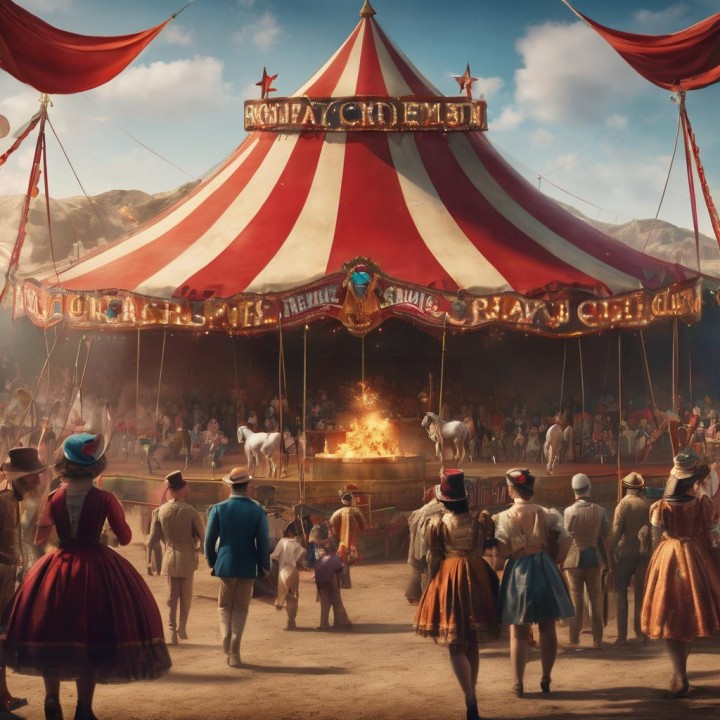
Under the Big Top: A Storied Journey Through Circus History
Step right up, ladies and gentlemen, boys and girls, as we embark on a thrilling journey through the rich and colorful tapestry of circus history. The circus, with its dazzling acrobats, daring daredevils, and mesmerizing menageries, has long been a symbol of wonder and entertainment. In this article, we'll explore the fascinating origins, evolution, and enduring legacy of the circus, an art form that has captured the hearts of audiences for centuries.
Circus Origins
The word "circus" conjures images of grand tents and roaring crowds, but its roots can be traced back to ancient civilizations. The circus concept as we know it today began with the Greeks and Romans. The term "circus" itself is derived from the Latin word "circus," meaning a ring or oval-shaped track. In ancient Rome, the Circus Maximus was a massive arena used for chariot races and other forms of entertainment.
Birth of the Modern Circus: Philip Astley and the First Big Top

The modern circus, as we recognize it, owes its existence to a British cavalryman and equestrian performer named Philip Astley. In 1768, Astley opened an amphitheater in London, where he performed daring riding tricks and displayed his equestrian skills. He soon realized that these performances were even more thrilling when held in a circular arena, which allowed him to showcase his talents in a more dynamic way.
Astley's circular arena became known as the "circus," and he is often credited with inventing the circus ring. His innovations included a 42-foot diameter ring, seating for spectators, and a format that combined equestrian displays with clown acts and acrobatics. Astley's successful formula laid the foundation for the modern circus, and his circus ring size remains the standard to this day.
The Golden Age of the Circus: P.T. Barnum and the Circus Kings
The 19th century saw the circus boom in popularity, thanks in large part to legendary showmen like P.T. Barnum. Barnum's "The Greatest Show on Earth" merged the circus with the sideshow, featuring curiosities and human oddities alongside traditional circus acts. His partnership with James Bailey created one of the most famous circus enterprises in history.
Simultaneously, the Ringling Brothers, who started as a small Wisconsin-based circus, grew to become a major force in the industry. In 1919, the Ringling Bros. and Barnum & Bailey Circus merged, creating a spectacle so grand it was often called "The Greatest Show on Earth.

Circus Arts and Innovations: From Trapeze to Clowning
The circus has always been a crucible of creativity, fostering the development of countless performance arts. The trapeze, tightrope walking, juggling, and clowning are just a few of the disciplines that found a home under the big top. The circus also introduced breathtaking innovations, such as the human cannonball act and death-defying aerial stunts.
The Modern Circus: An Evolving Art Form
In recent decades, the circus has evolved to reflect changing tastes and sensibilities. Traditional animal acts have given way to more humane and animal-friendly performances. Contemporary circuses, like Cirque du Soleil, have redefined the genre by incorporating storytelling, music, and cutting-edge technology into their productions.
The Enduring Magic of the Circus
Throughout its history, the circus has been a symbol of awe-inspiring feats, laughter, and the sheer joy of live performance. It has weathered challenges and transformations, yet its enduring appeal lies in its ability to transport audiences to a world of wonder and imagination. Whether it's the thrill of the trapeze, the antics of clowns, or the heart-pounding stunts, the circus remains a timeless celebration of human skill, artistry, and the power of the collective gasp of astonishment under the big top.